|
CFS PRESS
|
|
Shock Troops of the Confederacy
|
|
|
|
|
| SHARPSHOOTERS: A TACTICAL PRIMER |
|
|
|
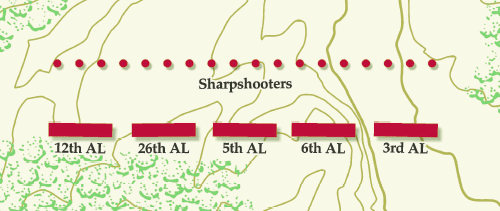 |
|
Sharpshooters as Pickets and Skirmishers
The sharpshooters act either as pickets for the brigade when stationary or in camp, or as skirmishers when the brigade attacks or retreats in line of battle. They are typically thrown out 1-300 yards in front of the brigade in open order to harass the enemy's line of battle, drive in his skirmishers, detect his movements, and kill his officers and NCOs. Each sharpshooter battalion is divided into two "corps" to relieve each other when acting as pickets. When the lines of battle close the sharpshooters may either rejoin their regiments or may fall back behind the line of battle to pick up stragglers.
|
|
|
|
|
|
|
|
|
|
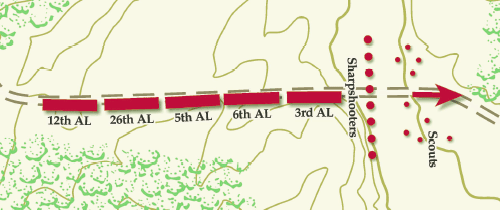 |
|
|
|
Sharpshooters as Advance and Rear Guard
Preceded by scouts, the sharpshooters screen the advance of the brigade when the tactical situation ahead is unknown. Acting as rear guard, they keep enemy infantry and cavalry at bay.
|
|
|
|
|
|
|
|
|
|
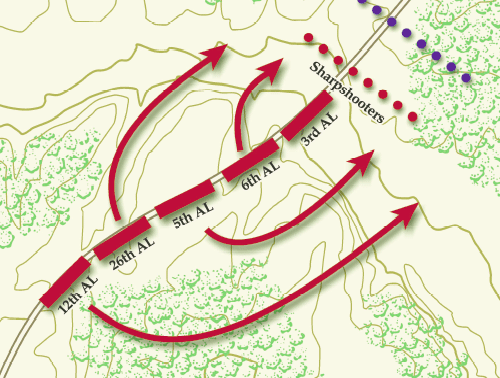 |
|
|
|
Sharpshooters in a Meeting Engagement
Upon making contact with the enemy, the sharpshooters engage the enemy long enough for the brigade to deploy into line of battle.
|
|
|
|
|
|
|
|
|
|
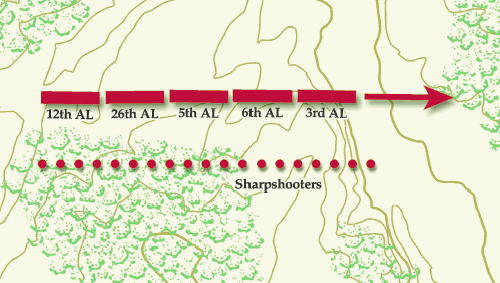 |
|
|
|
Sharpshooters as Flank Screen
When the brigade marches in column the sharpshooters act as a flank screen to avoid surprise, as they did on Stonewall Jackson's flank march at Chancellorsville.
|
|
|
|
|
|
|
|
|
|
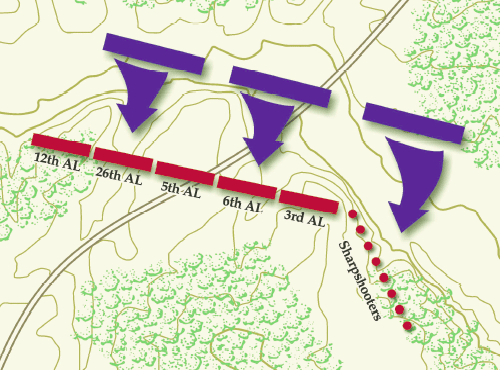 |
|
|
|
Sharpshooters as Flank Guard
The sharpshooters were fully capable of deploying as a separate tactical unit, and of operating independently. Sharpshooter battalions were often used to guard a vulnerable flank. In a guard mission the sharpshooters were expected to fight, rather than simply warn. Later in the war General Robert Rodes often used his Division Sharpshooters (a demi-brigade of four battalions) for independent missions in both offense and defense.
More on sharpshooter tactics
|
|
|
|
|
|
|
|
|
Graphics courtesy Steve Stanley, Colonial Design and Graphics, Gettysburg, PA
|
|
|
CFS Press Copyright 2006
|
|
|